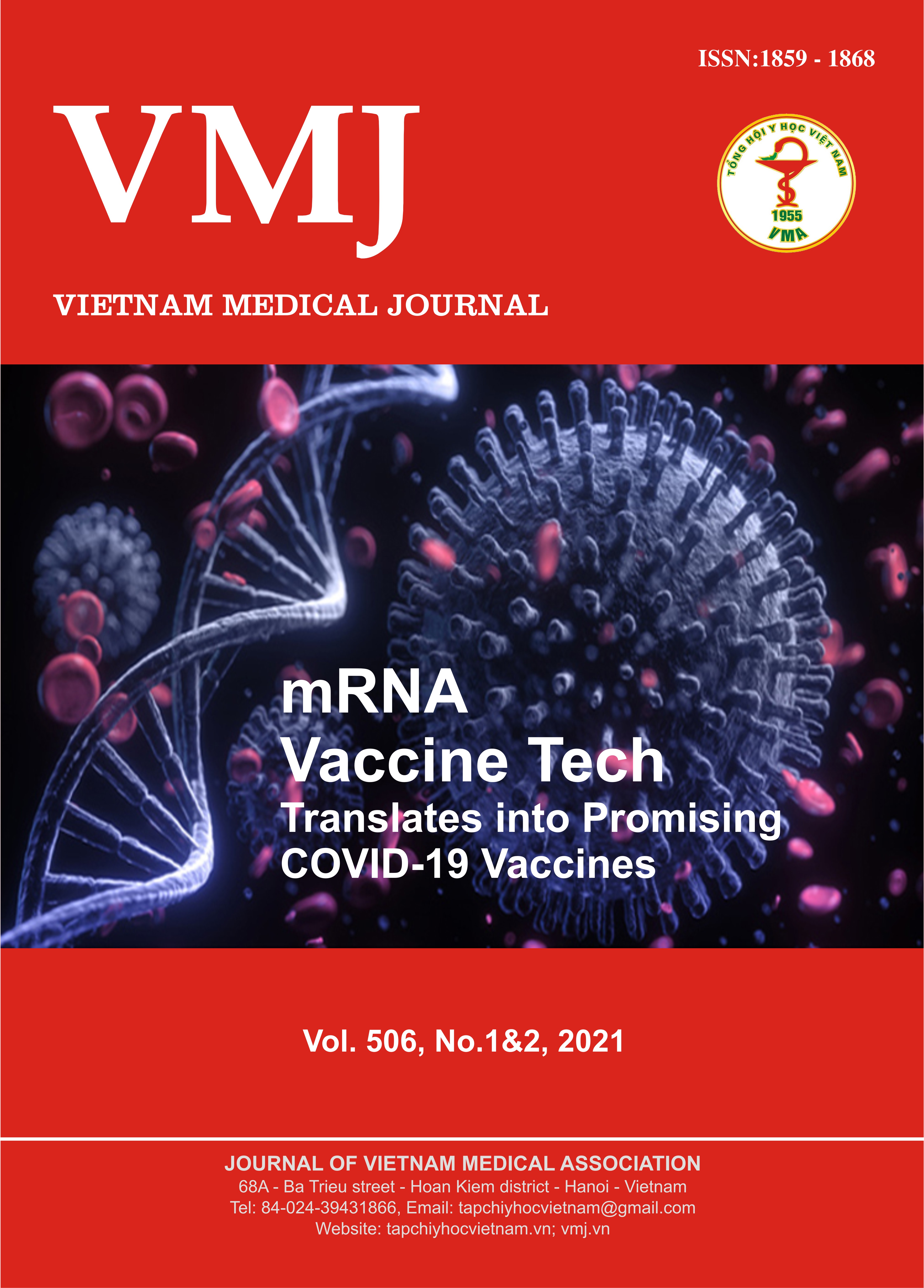IDENTIFICATION OF MALASSEZIA SPECIES AND ITS ASSOCIATION WITH CLINICAL MANIFESTATIONS OF ATOPIC DERMATITIS
Main Article Content
Abstract
Introduction: Atopic dermatitis is a chronic, recurrent inflammatory skin disease that is characterized by an eczematous reaction. Few studies have investigated fungi in the pathogenesis of atopic dermatitis, however, there are different about distribution of Malassezia species. Objectives: To indentificate of Malassezia species and its asociation with clinical manifestations in Vietnamese atopic dermatitis patient. Methods: 178 patients who were diagnosed with atopic dermatitis and had a postitive direct examination of Malassezia at the National hospital of dermatology and venereology between July 2019 and June 2020. Specimens were taken with cellotape, then stained in 20% of potassium hydroxit combined with ParkerTM blue black ink. All patient who had postive test were cultured on SDA and mDixon. For fungal samples, we selected pure colonies with morphological characteristics of yeast as follows about 1cm in diameter, round, cream or milky in color, smooth and glossy to detect the species. Results: From the samples of atopic dermatitis patients, we cultured and idenfified 41 cases. 5 species were found, in which M. globosa was the most common species, accounting for 39%, followed by M. restricta (19.5%), M. dermatis (17.1%), M. furfur (17.1%) and M. sympodialis (2.4%). Conclusion: On the skin lesions of Vietnamese patients with atopic dermatitis, M. globosa was the most common species with 39.0%.
Article Details
Keywords
Malassezia, Atopic dermatitis
References
2. Nowicka D., Nawrot U. (2019). Contribution of Malassezia spp. to the development of atopic dermatitis. Mycoses, 62(7), 588-596.
3. Glatz M., Buchner M., von Bartenwerffer W. et al (2015). Malassezia spp.-specific immunoglobulin E level is a marker for severity of atopic dermatitis in adults. Acta Derm Venereol, 95(2), 191-196.
4. Sugita T., Takashima M., Kodama M. et al (2003). Description of a new yeast species, Malassezia japonica, and its detection in patients with atopic dermatitis and healthy subjects. J Clin Microbiol, 41(10), 4695-4699.
5. Sandstrom Falk M.H., Tengvall Linder M., Johansson C. et al (2005). The prevalence of Malassezia yeasts in patients with atopic dermatitis, seborrhoeic dermatitis and healthy controls. Acta Derm Venereol, 85(1), 17-23.
6. Gupta A.K., Kohli Y. (2004). Prevalence of Malassezia species on various body sites in clinically healthy subjects representing different age groups. Med Mycol, 42(1), 35-42.
7. Prohic A., Jovovic Sadikovic T., Krupalija-Fazlic M. et al (2016). Malassezia species in healthy skin and in dermatological conditions. International Journal of Dermatology, 55(5), 494-504.
8. Nakashima T., Niwano Y. (2012), Fungus as an Exacerbating Factor of Atopic Dermatitis, and Control of Fungi for the Remission of the Disease, INTECH Open Access Publisher.
9. Han S.H., Cheon H.I., Hur M.S. et al (2018). Analysis of the skin mycobiome in adult patients with atopic dermatitis. Exp Dermatol, 27(4), 366-373.
10. Johansson C., Eshaghi H., Linder M.T. et al (2002). Positive atopy patch test reaction to Malassezia furfur in atopic dermatitis correlates with a T helper 2-like peripheral blood mononuclear cells response. Journal of investigative dermatology, 118(6), 1044-1051.
11. Cho O., Saito M., Tsuboi R. et al (2013). Relationships among the genotypes of Malassezia globosa colonizing patients with atopic dermatitis, the clinical severity of the disease, and the level of specific IgE antibodies. J Clin Exp Dermatol Res, 4, 197.
12. Rup E., Skóra M., Krzyściak P. et al (2011). Distribution of Malassezia species in patients with atopic dermatitis - Quality assessment. Postepy Dermatologii I Alergologii, 28, 187-190.


